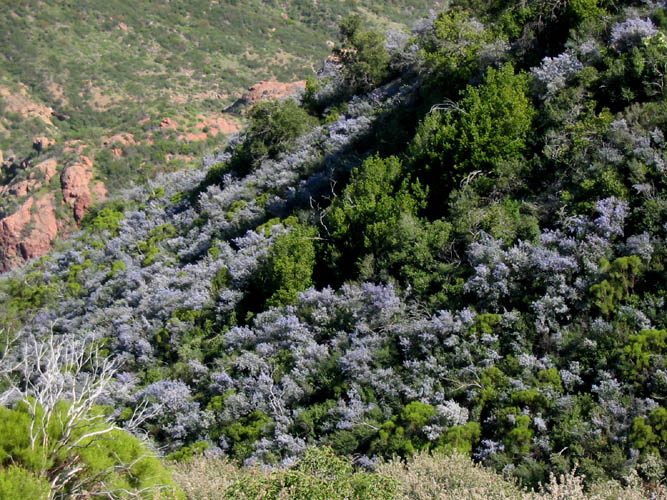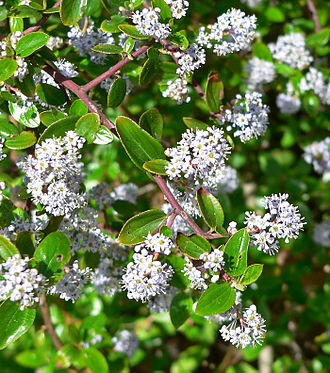
Native to dry habitats on the coastal mountains of California and Baja California, this evergreen shrub is a member of the buckthorn family, Rhamnaceae, that also includes jujube tree and Christ’s thorn. The shrub grows up to 15′ tall and has flexible, hairy young branches and twigs bearing ovate to elliptic leaves that are up to 1.6″ long, have hairy dark green tops and paler, hairy undersides. The leaves have 3 main veins and margins edged with hairy glandular teeth. In spring clusters of small blue or purple flowers appear and are followed by a sticky capsule which may or may not be hairy. Three varieties are recognized that vary most significantly in hairiness. Hairy ceanothus is a host plant for several butterflies and provides food and shelter for several birds, pollinators, and small wildlife. It is also valued as a hedge. The genus name, Ceanothus, is from the ancient Greek κεάνωθος (keanōthos), the name of a thistle. The specific epithet, oliganthus, is from Greek words ικρός (oligos) meaning few and ἄνθος (anthos) meaning flower. NPS Wikimedia Commons

Type: Evergreen shrub
Outstanding Feature: Flowers
Form: Mounding
Growth Rate: Moderate
Bloom: Clusters of small blue to purple flowers in spring
Size: 5-15′ H x 10-15′ W
Light: Full sun but tolerates part shade
Soil: Gravel to sand, dry, well-drained
Hardiness: Zones 7-10
Care: Low maintenance; in summer needs water 1″/month when established
Pests and Diseases: None of signifcance
Propagation: Seed with hot water treatment
Outstanding Selections: None
Photo Credit: Wikipedia